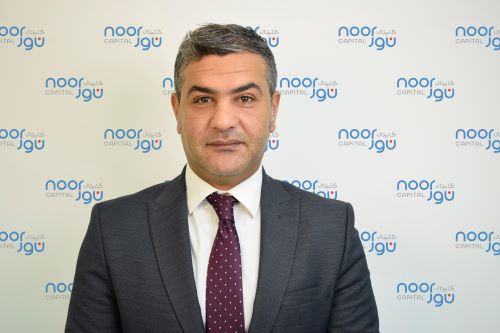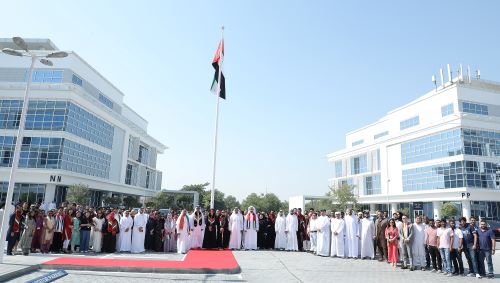Alfa Romeo is celebrating Quadrifoglio and Autodelta anniversaries

Alfa Romeo has announced the official start of the celebrations for the 100th anniversary of the legendary Quadrifoglio symbol and the 60th anniversary of Autodelta, the legendary racing department in Settimo Milanese and Carlo Chiti’s team. These are two milestones in the history of the brand, an expression of noble Italian sportiness since 1910, which, to this very day, trigger strong emotions and great pride in the Alfa Romeo tribe. For the occasion, Alfa Romeo is revealing the two new logos that will accompany the Clubs’ and the brand’s events, as well as the various communication activities and novelties that will follow throughout 2023.
Both designed by the Centro Stile Alfa Romeo, the two new logos reinterpret, from a modern perspective, the old ones while projecting them into the future of the brand, which aims to reinvent sportiness in the 21st century. In particular, the one dedicated to the centenary of Quadrifoglio has the sturdiness and elegance of the historic logo while evolving only its color point. A contemporary chromatic touch recalling the glorious past of the legendary Alfa Romeo cars that have entered the collective imagination.
Likewise, the Autodelta logo is a stylistic feature to be maintained and preserved both in its original look and colors. Indeed, despite the years, this symbol of sportiness remains impressed in the memory of Motorsport lovers. That is why, the new celebratory version features few changes, making it more contemporary and aligned with Alfa Romeo’s current communication assets. This is evident in the new Sequel font, the same font employed by Alfa Romeo; the ever-present tricolor, as a proud expression of its origins; and the addition of the anniversary date that highlights the longevity of the Autodelta brand.
For Autodelta’s 60th anniversary Alfa Romeo is also setting up a conference at the Arese Museum on March 5, the day in which the racing department was founded. Meanwhile on June 25, as part of the brand’s birthday celebrations, the Quadrifoglio Day will take place, followed by the “Backstage” conference which will feature a parade and flashmob which will be open to all of Alfa Romeo clubs.
Quadrifoglio: a symbol of Made in Italy sportiness since 1923
The constant pursuit of excellence first applied to racing and then transferred, entirely, to production cars: this, in a nutshell, is the Alfa Romeo philosophy embedded in the Quadrifoglio, the legendary symbol that has identified Alfa Romeo’s most high-performance creations, not only those employed on racetracks around the world but also some special production models, since April 15, 1923.
The first Alfa Romeo car adorned with the Quadrifoglio was the RL “Corsa” of the driver Ugo Sivocci, who won the 14th edition of Targa Florio in 1923, thus winning the first of the brand’s ten laurels in this prestigious competition. And the same symbol of good luck was standing out on Brilli Peri’s “P2” when he won the first “World Car Racing Championship” in Monza, in 1925, the first of the five World Titles won by Alfa Romeo. In the late 1920s, it was, once again, the Quadrifoglio that distinguished during the races the Alfa Romeo cars of the parent company from the ones run by Scuderia Ferrari, which had the “cavallino rampante” as its emblem.
In 1950 and 1951, Giuseppe “Nino” Farina and Juan Manuel Fangio lead Alfa Romeo 158 and 159, the iconic “Alfetta,” to victory in the first two Formula 1 World Championships. Then, in the 1960s, the Quadrifoglio characterizes the “ready-to-race” version of the “Giulia,” the “TI Super,” and then it joins Autodelta’s blue triangle logo for several decades: from the “GTA” to the “33” to the two World Championships of the “33 TT 12” (1975) and the “33 SC 12” (1977).
Alfa Romeo’s racing activity continued in the 1980s when, after its return to F1 in 1980, it triumphed again in touring car racing (“GTV 6 2.5”), followed by the triumph in the “DTM” with the “155 V6 Ti” in 1993 and the very long series of victories of the “156 Superturismo” (1998-2004).
Ordinary Alfa Romeo production cars also featured the Quadrifoglio. They were particularly high-performance models manufactured between the 1960s to the 1980s. Some carried the symbol on the bodywork, with no appearance in the official name – such as the “Giulia Sprint GT Veloce” or “1750 GT Veloce” – while others, from the 1980s onwards, had the Quadrifoglio in their official name, such as the various versions of the “33 Quadrifoglio Verde” or the “164 Quadrifoglio Verde.” It is also worth mentioning that, between the 1970s and 1980s, the Quadrifoglio also evolved and was available in two versions: “Verde” for sportier vehicles and “Oro” for more refined and luxurious set-ups.
Over time, the initial “Q” itself became part of the Alfa Romeo vocabulary, eventually identifying the most advanced technical solutions: the most famous of all is the Q4 all-wheel drive, but there was also the Q2 self-locking differential, the Q-System automatic transmission and the Q-Tronic, just to name but a few.
Lastly, the Quadrifoglio symbol returned both on Mito (2008) and Giulietta (2010) and when the new Alfa Romeo generation was born in 2015 with the launch of Giulia in its Quadrifoglio version, powered by the new 2.9 BiTurbo gasoline engine with 510 HP and an outstanding performance, so much so that it set the category record in 7’32” in the famous Nurburgring circuit. Stelvio, the first SUV produced by Alfa Romeo, is also at the top of the range in its Quadrifoglio version.
Autodelta: Alfa Romeo’s legendary Racing Department.
On March 5, 1963, Carlo Chiti and the Chizzola brothers founded a small company based in Feletto Umberto, near Udine, with the aim of collaborating with Alfa Romeo in the construction of the Giulia TZ, a compact gran turismo designed by Zagato, built on the Giulia’s engine and mechanics and equipped with an exclusive tubular chassis, hence the acronym Tubolare Zagato. This marked the beginning of one of the most beautiful chapters in international motorsport, so much so that the company soon became Alfa Romeo’s Racing Department. As a matter of fact, in 1965, it was bought by Biscione with the aim of running the official comeback to competitions, after its withdrawal from the F1 World Championship in 1951, when it won its second title with ‘Alfetta’.
For this reason, the car manufacturing company decided to create an ad hoc racing organization, physically detached from the production facility and with sufficient discretion in making technical and sporting decisions quickly. The General Manager of the new industrial and sports reality was the charismatic engineer Carlo Chiti, who relocated Autodelta in some anonymous warehouses in Settimo Milanese, not far from Arese. This is where some of the most famous Alfa Romeo racing cars would come from, including the legendary 1965 Giulia Sprint GTA, which won three consecutive “Challenge Europeo Marche,” dozens of national championships and hundreds of individual races all over the world. Fun fact: Giulia Sprint GTA was the first touring car to race at the Nurburgring’s Nordschleife under 10 minutes.
In 1967 Alfa Romeo decided to take the big step into the “prototype” category, the major international stage of motor racing at the time, with the “33/2-liter” model winning its first trophy when it made its debut in Fléron, Belgium. The following year Autodelta’s prototype cars won the category victory at the 24 hours of Daytona, the 1000 km of Nurburgring, the 500 km of Imola and the 24 hours of Le Mans. The “33 TT 12” of 1975 (probably the most successful year for Autodelta) was also remarkable. The model made Autodelta won the World Championship of Marche, repeating the victory two years later with the “33 SC 12”. After that, Autodelta took over the management of all Alfa Romeo’s sports programs, from the Alfasud trophy to Formula 1. In 1984 Carlo Chiti left the company, and the following year Autodelta was dismissed. To conclude, it should be remembered that Autodelta was also a formidable training ground for many Italian drivers, including Andrea De Adamich, Arturo Merzario, Andrea De Cesaris, Bruno Giacomelli, Giorgio Francia, just to name a few, and just as many foreign champions: from Jochen Rindt to Jacky Ickx, from Jean Pierre Jarier to Mario Andretti.
Last Updated on 2 years by News Desk 2













